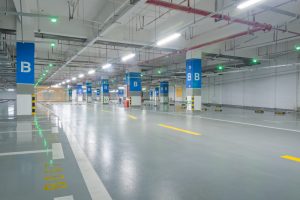California Supreme Court May Legislate the Environmental Impact of Single Family Homes

 When it comes to designing and building new homes, the environmental impact of the project may not always be a primary concern. However, in states like California, which is experiencing one of its worst droughts in recent history, this factor is growing in importance. Now, the state Supreme Court is hearing arguments debating whether a computer magnate’s plans to build a huge mansion should be available for public review, a case that could have a significant impact on new home construction in the state.
When it comes to designing and building new homes, the environmental impact of the project may not always be a primary concern. However, in states like California, which is experiencing one of its worst droughts in recent history, this factor is growing in importance. Now, the state Supreme Court is hearing arguments debating whether a computer magnate’s plans to build a huge mansion should be available for public review, a case that could have a significant impact on new home construction in the state.
Mitchell Kapor, founder of Lotus Software Corporation, and his wife, Freada Kapor-Klein, originally planned to build a 10,000-sq-ft home with a 10-car garage on a hillside in Berkeley with a 50% slope. While not an unusual factor for homes in California, many engineers disagreed about whether or not the project could cause landslides. After hearing conflicting testimonies on the subject, the Berkeley City Council approved the home plans in 2010. However, the Council failed to prepare an environmental impact report, which would have required them to invite public commentary and order changes if there was a possibility of environmental harm.
According to California state law, single-family homes and infill construction (defined as building up an area for further building or redevelopment) do not require environmental reviews unless the situation is “unusual.” However, courts disagree about how exactly to determine this. In 2012, an appellate ruling found that the Kapors’ house was unusual due to both its size and location. Now, the state’s high court is trying to decide on an official definition for the term, with a number of business and conservation groups arguing for and against environmental reviews for single-family homes. Meanwhile, construction on the hillside mansion has been halted until a decision is reached.
In an hour-long hearing in Los Angeles on Tuesday, December 2, Amrit Kulkarni, the couple’s lawyer, argued that the law should be applied while recognizing that most construction projects will have some impact on the local environment. He also stated that deference should be given to the Berkeley officials who had previously not required an environmental review. However, Susan Brandt-Hawley of the Berkeley Hillside Preservation Group argued that the city had ignored evidence of potential hazards, as well as the likelihood that significant work to the nearby area would be necessary to reduce these problems. At least one expert witness had testified that builders would have to build 27-foot retaining walls, grade the site, and even widen a nearby roadway. These factors, said Brandt-Hawley, should have been considered unusual.
Because of its controversial nature and potential impact on state building codes, the case has attracted attention from builders, architects, engineers and homeowners around the United States.
A ruling in the case, titled Berkeley Hillside Preservation vs. Berkeley, is due by March. Thus far, the court’s judges seem divided over the need for consistent legislation and the potential impact of single-family homes.






